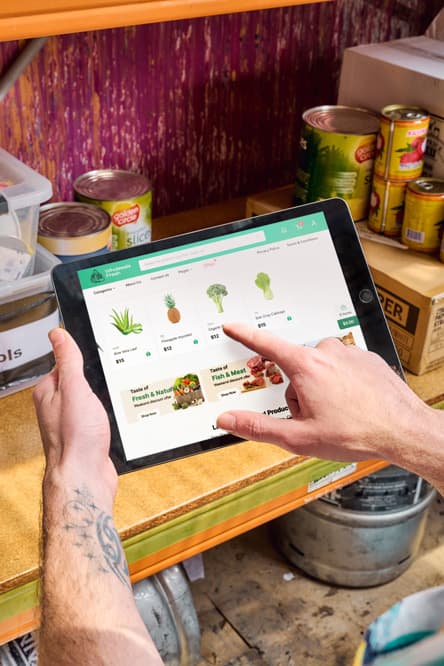
- Business Growth & Optimisation
Tips for Protecting Your Business’s Cash Flow
Here are 4 tips to help you keep your cash flow under control.
No matter how many sales are made, if your takings aren’t settled and at your disposal quickly, your business is going to struggle to scale up. As restrictions continue to ease across the country and businesses begin to reopen their doors, it’s the perfect time to take stock of where you’re at. For most business owners, the lifting of lockdowns marks the end of a significant period of disruption — one which has had a negative impact on cash flow.
A recent survey undertaken by Xero, the accounting software platform, explains the current pains being felt by the Australian small business community are driven by a delay in invoice payments — which has a knock-on effect. 63% of the small businesses surveyed said their customers are often behind on payments, which affects a business owner’s ability to pay their suppliers, staff, and themselves. In fact, 24% of those surveyed said that they are currently delaying paying themselves.
Keep reading to discover ways to protect and speed up your cash flow.
The light at the end of the tunnel
It’s impossible to predict what customer sentiment will be like coming out of lockdown. However, what we do know is that reopening is happening ahead of the festive season — the busiest time of year for many businesses. It’s highly likely that Australians will be ready to spend big.
For example, as explained in the Zeller Hospitality Report, 25% of diners in metro areas are planning on dining locally more frequently than prior to the pandemic. This “revenge spending” phenomenon is likely to give all types of businesses a boost, as consumers begin splashing the disproportionate amount of cash saved during lockdown. This means there’s a good chance you’ll need access to extra cash to cover the costs of additional stock and staff.
Here’s where good cash flow comes in; it can streamline this period of uncertainty by giving you the flexibility to adapt to demand.
Why cash flow is critical to business success
The term “cash flow” refers to the net money flowing in and out of your business. A positive cash flow gives you more room to pay bills, staff, and invoices without seeking loans — adding further interest to your outflow. For this reason, a business’s ability to manage its cash flow typically determines its likelihood of success.
One of the reasons you might have poor cash flow is due to late payments. When customers don’t pay their invoices in time, it inhibits your ability to invest, grow and employ. And unfortunately, this means that 63% of small businesses themselves fall often behind on payments, causing stress for 35% of business owners. It’s a vicious cycle.
Fortunately, there are a few things every merchant can do right now to improve their cash flow.
Tips for protecting your business’s cash flow
Track your incomings and outgoings closely
One thing that can immediately empower you with greater cash flow control is full visibility of the money coming in and out of your business. Access to this information will provide you with a real-time read on the financial health of your business. Plus, it helps you quickly understand your short-term cash flow, allowing you to make more reliable business decisions now that can fast-track your growth in the long term. Something like the Zeller Dashboard will afford you this visibility, whilst also equipping your team with the insights to meet (and surpass) their targets.
Plus, if you take a few minutes to set up Xero Bank Feeds, you'll get an up-to-the-minute view of incoming and outgoing Zeller transactions in your Xero organisation for streamlined reconciliation and analysis.
Ready to get started with Zeller?
Sign up for freeConsider changing accounting software
How much time do you spend managing your invoices each month? The average small business owner spends 12.4 hours a month managing their accounts — precious hours that could otherwise be spent reinvested in growing the business and speeding up cash flow. One way to get those hours back is by changing your accounting software.
If you’re wondering whether your accounting software is hindering your efficiency, ask yourself these questions.
Does it integrate with your other software tools, such as reporting, inventory management and email marketing software?
Does it come with a mobile app?
Is there support available when you need it?
If you can’t answer yes to all of these questions, it might be worth researching accounting software options that are better suited to your business.
Speed up your cash flow cycle
The days between manufacturing a product or providing a service and the exchange of payment is what’s referred to as your cash flow cycle. It’s a measure of the amount of time it takes for your business to convert its investments into cash. While the length of this cycle tends to differ from industry to industry, no two businesses will ever be the act same. This is because every business’s cash flow cycle is influenced by a number of factors.
Regardless of what industry you operate in, the goal should always be to reduce the number of days in your cash flow cycle — that’s how you boost your overall efficiency and free up more cash. As simple as that sounds, the average small Australian business is unfortunately forced to wait 25.5 days for payment. The total cost of these late repayments equates to a whopping $115 billion each year being withheld from small-to-medium business cash flow.
Something as simple as replacing your EFTPOS terminal can help speed up your cash flow cycle. Not only does Zeller Terminal give you the ability to accept contactless mobile payments – making it easier for customers to pay immediately – but it also accepts a broad range of payment methods. The easier it is for your customers to make payment, the sooner you’re likely to get paid.
Know your cash reality
Now that you’re across the cash that’s coming in and out of your business, as well as how long it takes to arrive in your bank account, it’s time to work out what it’s costing you to keep the lights on: your daily burn rate. This can be worked out by dividing your total monthly expenses by the number of days in a month. This is the cash required to operate your business on a day-to-day basis.
Once you know your daily burn rate, take the total amount of business funds in your bank account and divide it by that rate to determine the number of days for which you have cash on hand.
If you’re feeling shocked at the result, rest assured — you’re not alone. Most business owners operate on nine to 12 days' worth of cash. While it doesn’t sound like a strong position to be in, it is indeed manageable. From here, however, make it your mission to get to a point where you’re operating with three to six months of cash on hand. It’s not the sweet spot for every business, but it is a good rule of thumb recommended by professionals.
Understanding the length of your cash cycle helps you calculate an accurate cash-on-hand target. If you take payments via an invoicing system, your sales cycle will be on the longer side and you’ll need more days of cash on hand. If your business is largely transactional (i.e. customers pay on the spot), you won’t need as much of a buffer. The trick is understanding your business’s financial health and setting effective targets for improvement.
Needless to say, these are strange times we’re in, but achieving a cash flow boost will help you navigate them more confidently and seamlessly. Now that you know how to strengthen your cash flow, it’s time to optimise every other aspect of your business for its return. Sign up to our Business Blog to cash in on valuable insights sent straight to your inbox.
Please note this article is for educational purposes only. Zeller does not accept responsibility for the accuracy of the information presented in this article.



